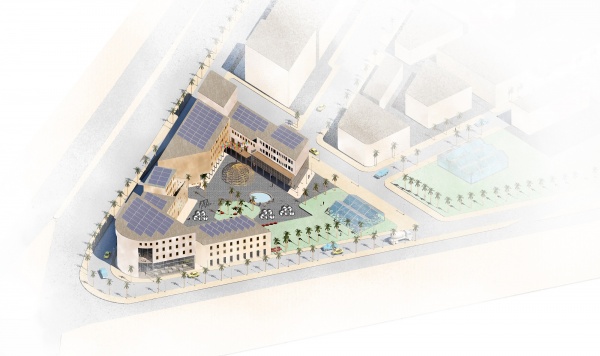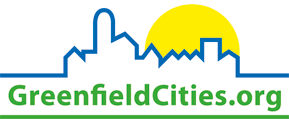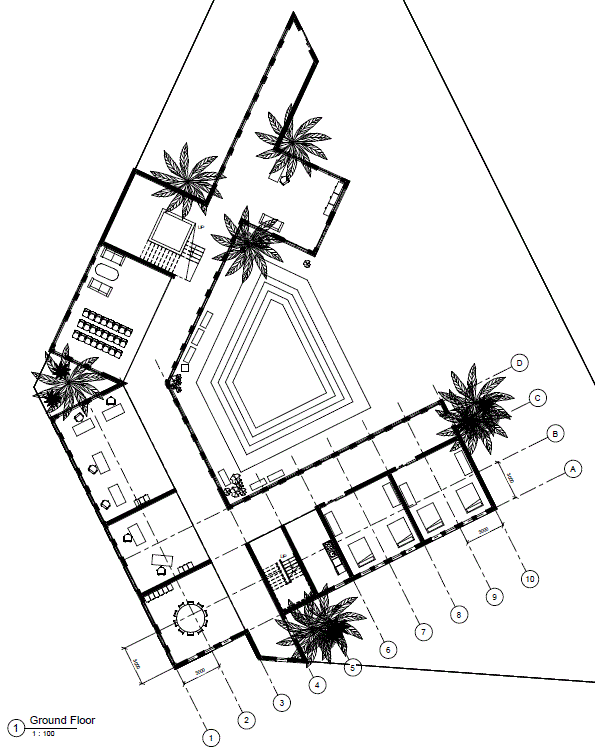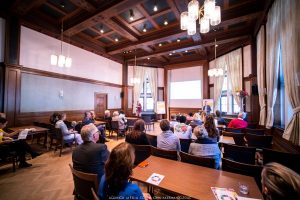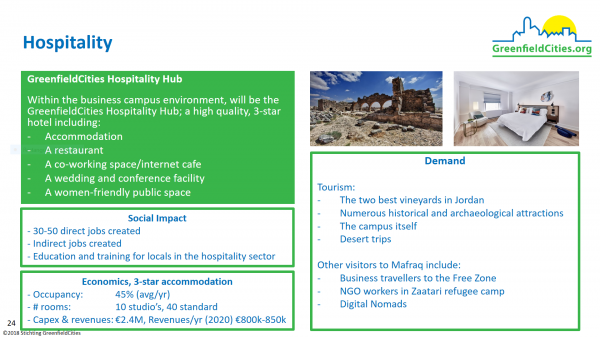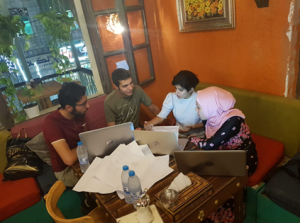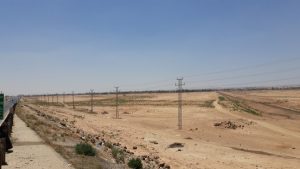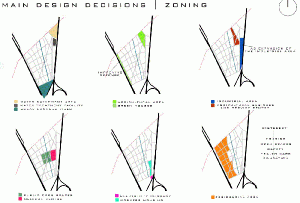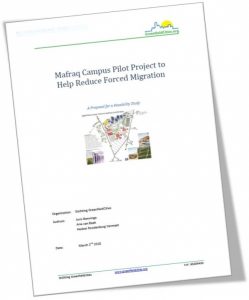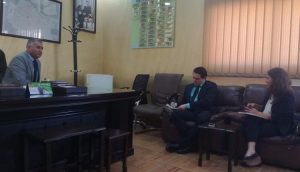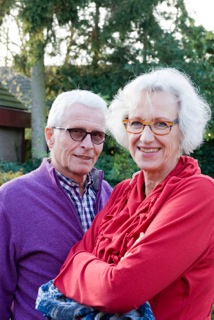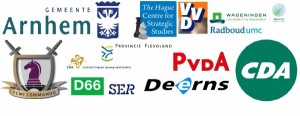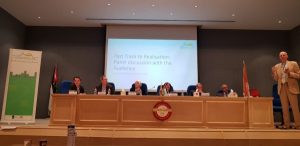 On November 18th GreenfieldCities organized a workshop on the preliminary results of the Feasibility Study for a clean-tech Youth Business Campus in Mafraq for Jordanian and Syrian youth. The workshop was successful in two ways: the feasibility of the Campus looks positive and there was support across the board from key Jordanian stakeholders.
On November 18th GreenfieldCities organized a workshop on the preliminary results of the Feasibility Study for a clean-tech Youth Business Campus in Mafraq for Jordanian and Syrian youth. The workshop was successful in two ways: the feasibility of the Campus looks positive and there was support across the board from key Jordanian stakeholders.
Supported by the Dutch Ministry of Foreign Affairs, GreenfieldCities conducted extensive research in Mafraq governorate to find out how the local economy could be revitalized in a sustainable way through the Campus model. GreenfieldCities presented its objectives, a design for the Campus and key findings from the feasibility study.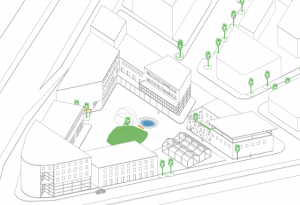 Feasibility looks good: the overall social, environmental and financial business case for long-term private sector growth in ICT, Energy, Water, Hospitality, Construction and Agri-Food appears strong enough. The roadmap for the creation of 1.500 new jobs for young people in Mafraq is characterized by a step-by-step approach: starting relatively small with a Campus for approximately 150 young people and growing gradually into a fully developed Campus where 1500 young people will learn, work and live.
Feasibility looks good: the overall social, environmental and financial business case for long-term private sector growth in ICT, Energy, Water, Hospitality, Construction and Agri-Food appears strong enough. The roadmap for the creation of 1.500 new jobs for young people in Mafraq is characterized by a step-by-step approach: starting relatively small with a Campus for approximately 150 young people and growing gradually into a fully developed Campus where 1500 young people will learn, work and live.
While the funding of the first phase should come predominantly from public resources and donors, the business model for the Campus allows to make the transition towards private sector funding predominantly after 3 years. The Campus can be financially independent within 5 years. Helped by Jordanian students, our architect made a sketch design of the first phase. The first 150 young talents should be able to start working, living and learning on the Youth Business Campus by the end of 2019 or early 2020.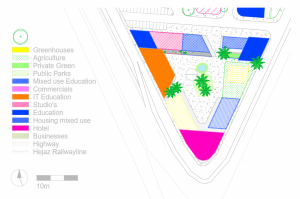
The event was attended by the Minister of ICT, H.E. Mothanna Gharaibeh, and the Ambassador of the Netherlands to Jordan, H.E. Barbara Joziasse. More than 90 attendants saw presentations from Dr. Iyad Abu Haltam, Board Member of the Chamber of Industry, Nayef Al-Bakheet, CEO of the Mafraq Development Corporation, Ruba Al Zu’bi, Managing Director of the Scientific Research Department of the Abdul Hameed Shoman Foundation and Haneen Al-Shdifat of GreenfieldCities. The speakers emphazised that the Campus will help tackle youth unemployment, which is believed to be above 50% in Mafraq, with the attraction of private sector investments to Mafraq and stimulate green economic growth. The Campus will furthermore provide the Mafraq Economic Free Zone (King Hussein Bin Talal Development Area) with an attractive front office to help attracting more businesses to the zone.
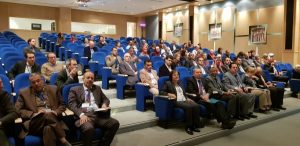 The attendants expressed strong support for the plans and actively contributed during break out discussions about the main challenges and opportunities for partnerships and funding. These discussions were facilitated and summarized in a plenary session by Mahmud Al-Duwayri, Ruba Al-Zu’bi, Laila Abuhassan, Abdelnabi Fardous and Ahmed Al-Salaymeh, members of the GreenfieldCities Advisory Board Jordan. Our Advisory Board contributes with strategic advice, network building, creating governmental support and local embedding of the project.
The attendants expressed strong support for the plans and actively contributed during break out discussions about the main challenges and opportunities for partnerships and funding. These discussions were facilitated and summarized in a plenary session by Mahmud Al-Duwayri, Ruba Al-Zu’bi, Laila Abuhassan, Abdelnabi Fardous and Ahmed Al-Salaymeh, members of the GreenfieldCities Advisory Board Jordan. Our Advisory Board contributes with strategic advice, network building, creating governmental support and local embedding of the project.
The event was hosted by the Amman Chamber of Industry which offered GreenfieldCities professional assistance and a wonderful venue for the workshop. Looking back at the event, GreenfieldCities is delighted with the positive reactions from stakeholders and support from the Advisory Board, and is looking forward to work with partners and donors to implement the first part of the Youth Business Campus in 2019. Arie van Beek, co-founder of GreenfieldCities, reflected upon this outcome: “During and immediately after the workshop, we realized our initiative has gained significant momentum”.
![]() For the second consecutive year, Triodos Foundation made a substantial donation to GreenfieldCities. The Triodos Bank, which originates from the foundation, is one of the most sustainable banks in the world and more than 700.000 clients support their positive movement. Therefore, GreenfieldCities is proud that the Foundation become our first so-called friend of GreenfieldCities. Contributions like those of Triodos are important to continuously work on our mission to stop forced migration.
For the second consecutive year, Triodos Foundation made a substantial donation to GreenfieldCities. The Triodos Bank, which originates from the foundation, is one of the most sustainable banks in the world and more than 700.000 clients support their positive movement. Therefore, GreenfieldCities is proud that the Foundation become our first so-called friend of GreenfieldCities. Contributions like those of Triodos are important to continuously work on our mission to stop forced migration.